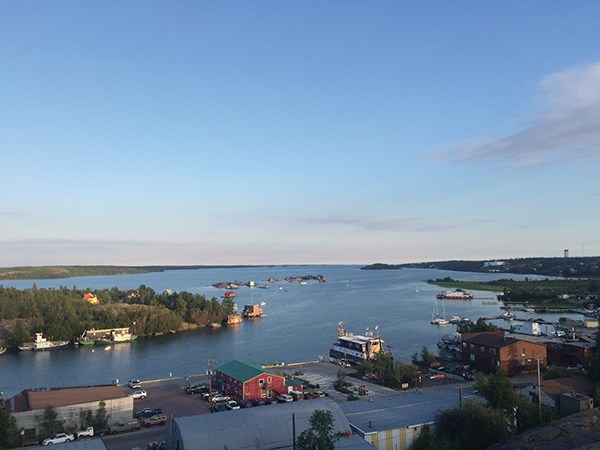It’s a rare and special experience to travel somewhere in your own country and have it feel like one of the most foreign, unique and inspiring trips you’ve ever been on. In a country like Canada, with huge and varied land masses, diverse groups of people and cultures and a propensity toward mosaic versus assimilation, this means that travelling within our own borders can feel more disorienting than travelling to far-off continents. From July 8 to 12 I took a trip to Yellowknife in the Northwest Territories. To quote Robert Frost, “Two roads diverged in a wood, And I – I took the one less travelled by, And that has made all the difference.”
The trip grew from a friend who had dropped my name to a local climbing club in Yellowknife while teaching there. They got in touch about possibly getting myself up to teach their members, a mostly beginner and often transient crowd, an intro course and then a top rope anchors course.
After a few emails back and forth it was obvious that the interest was greater than one guide could manage, so I brought along local ACMG Rock Guide Jamie Selda to help pass on some wisdom.
We touched down on a Friday night after flying from Vancouver to Calgary, weathering a four-hour layover during Stampede week by taking a taxi to a new climbing gym near the airport and bouldering, and then flying on to Yellowknife. We finally arrived, after flight delays caused by lightning, around 9 p.m. Eric Binion, president of the Yellowknife Climbers Club, met us in the small terminal next to a stuffed polar bear.
The first thing we noticed was the light, a 4 p.m. afternoon sky shone bright at 9 p.m. After dumping our bags in a club member’s loaned condo we raced for Boston Pizza, aching with flight hunger and not wanting to miss last kitchen call. Another surprise here, most restaurants stay open until 11 p.m. or longer because of the amount of light in the summer. The shock came as we finished our pizza and Boston-sized beers that it was 12:45 in the morning and we had to be up at 7.
The next two days were a blur: the obligatory Tim Hortons run at 7 a.m.; meeting the club members on the opposite side of Great Slave Lake to Yellowknife; bushwhacking in through a springy muskeg carpet of Labrador Tea; and figuring out how we could use the crag, a small outcrop of most probably ancient Canadian Shield Granite named Big Crack, to teach these relative beginners some safe basic skills and then to get them to a place where they could come and use the cliffs themselves for top rope climbing.
There was a strong thread running through the types of people we met there. Many were government workers in the form of nurses and environmental and resource planners working with mines or the First Nations. There were the mineworkers, mostly made up of geologists. The average salary of people living and working in Yellowknife was $80,000. That explained the $15 beers and shockingly expensive house prices.
Overall, many of them just loved the uniqueness of living somewhere like nowhere else in the world, the simple rustic, no frills way that people do and say pretty much whatever they like and the way the environment there dictated much of the pace of life, especially in the winter. Six months of -40 degree Celsius temps is pretty extreme. I met professional dog mushers and heard about 60-day canoe trips with portaging what was paddled all the way into Nunavut. Their videos of the bugs were terrifying.
The young couple that invited us to come up are expecting a baby in a few months and they live in a hodgepodge little cabin right above the Great Slave Lake. Down on the Coast we all live in warm, wet, lush richness and choose from any number of extreme pastimes to jolt us back to appreciating our days. In Yellowknife people live a different kind of extreme, where life and the landscape become your way of life.
While I understand why people would fall in love with the way of life up north, the West Coast may have made me too soft. With 40,000 odd people living in the entire territory and rock hiding everywhere in the landscape, Yellowknife might just become Canada’s largest, no, the world’s largest top rope climbing area. The YKCC members just have to go out and find it during their long summer days.




